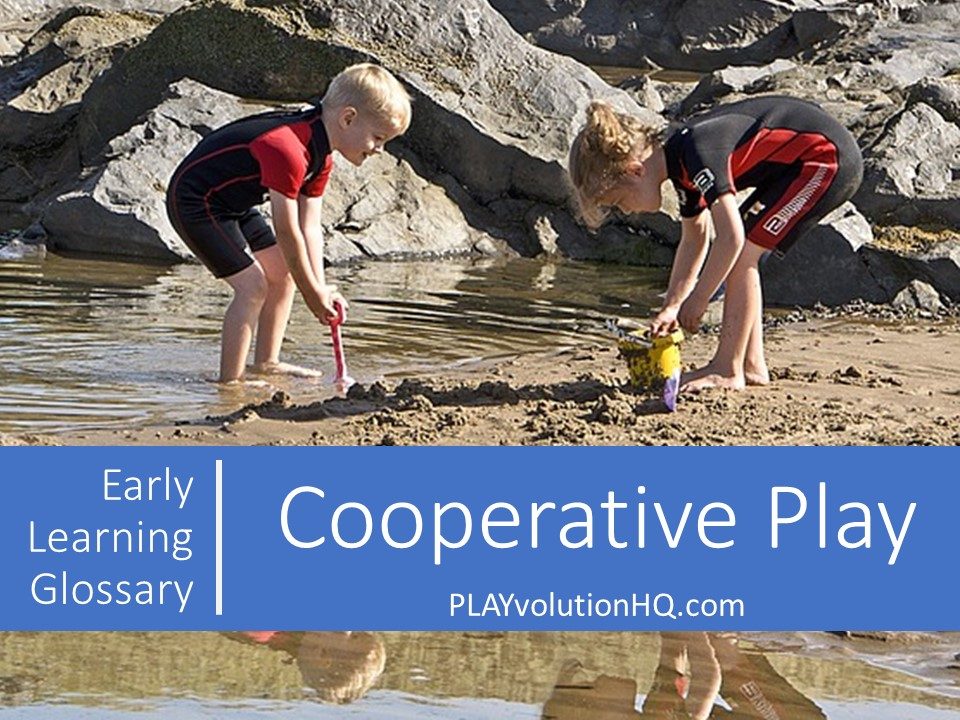
What Is Cooperative Play?
The term Cooperative Play refers to social play where the players work together to organize, plan, assign roles, and define rules for their play. This play, “is goal-oriented and children play in an organized manner toward a common end.” (www.psychology-lexicon.com) Children generally start engaging in cooperative play around 36 to 48 months of age. It continues throughout childhood and into adulthood.
Collaborative play is one of the six types of play recognized by Mildred Bernice Parten Newhall, commonly referred to as Parten’s 6 Stages Of Play.
Examples include playing ‘house’, playing a board game, collaborating on building a block structure, or participating in a game of tunnel tag.
While competitive play focuses on winners and losers, cooperative play, “is concerned with solving a problem by working together to achieve a common goal.“
Cooperative play requires players to exercise a great deal of self-control. Players not only have to work together to negotiate rules for their play, they have to consent to follow those rules. For example, if you’re playing Ninjas and Dragons and the agreed to rule is “to come back to life you must be tagged by a teammate” then you have to stay dead until a teammate reanimates you. If you don’t, you could break the play.
Cooperative play also requires a fair amount of sharing, turn taking, and empathy. For example, Emmie may want to horde all her favorite blocks and add them to the structure as she pleases, but to keep the play going she realizes she has to fight those desires. All this self-regulation can be physically and emotionally draining.
Since cooperative play is so socially intense, the ability to read play face, plangry face and I want to eat you face is a valuable skill.
It should be noted that children are often expected to engage in cooperative play long before they are cognitively able. As stated above, real cooperative play is something that children grow into in the 36-48 month old range. Too often, children half those ages are expected to engage in cooperative play. Many ‘behavior problems’ arise in child care toddler rooms due to unrealistic adult expectations around that age group’s inability to share, take turns, or empathize with their peers. The truth is, they are not ready for cooperative play.
Contribute content to Playvolution HQ
Brought to you by Explorations Early Learning
Thoughts On This Entry?
I’d love to hear your thoughts on improving this entry and suggestions for additional glossary additions in the comments below. You can also contact me with comments or concerns.
Browse Trainings
Post Author
Jeff Johnson is an early learning trainer, podcaster, and author who founded Explorations Early Learning, Playvolution HQ, and Play Haven.


Leave a Reply